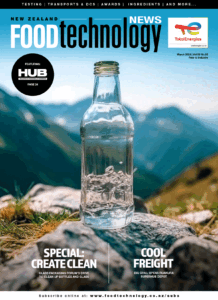By Tony Hunter, food futurist
We’ve become accustomed to animals being our primary source of protein but there’s not enough arable land and freshwater to simply scale animal agriculture to meet our future requirements in 2050. With arable land and freshwater at a premium we need alternative sources which use less of these and other resources. Sources such as plant-based protein and mycoprotein (from fungi) have emerged over the last few years, but less obvious sources are now making an appearance.
For instance, Netherlands company Grassa is growing grass for protein. They claim that their process can produce two and a half times as much protein per hectare from grass compared to soy. They’ve recently teamed up with plant-based ingredients company Schouten to research and commercialise their product.
Australian company The Leaf Protein Co. are extracting the most abundant protein on Earth, the photosynthesis associated protein RuBisCo. Hopefully, they’ll have a pilot plant operational in 2024. We humans can extract only a fraction of the protein from green leaves, that’s why cows eat grass and we eat cows. But with access to leaf proteins, we can cut out the middle cow and go straight to human food. This offers enormous new opportunities for some horticulture companies; turf companies, I’m looking at you.
Another plant derived source of protein is from wood. Arbiom are using wood residues to produce single cell proteins from yeast. They raised Euro14 million in 2022 to construct their first manufacturing facility in France, capable of 10,000 tonnes per year. They’ll first focus on animal feeds and then alternative cheese and meat products using their SylPro ingredient.
One major advantage of these products is that, unlike crops such as wheat and soy, they’ll be allergen free. Secondly some of them recycle unused resources, like waste wood. Combined with much lower resource usage new protein sources like these offer us the opportunity to produce more food within planetary boundaries.
With the global population likely to hit nearly 10 billion by 2050 and growing middle classes we’re going to need every available technology and source of protein to feed them sustainably, healthily and equitably.































































































